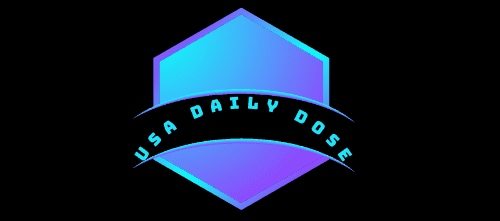When the NCAA adopted the language a little over a year ago which allowed college athletes to monetize — or profit, as it was called — their name, image and likeness (NIL), it created a new chapter in amateur athletics that was as innovative as it was sometimes confusing.
Since then, we’ve seen NIL deals take shape at the NCAA level, with athletes singing endorsements we never thought possible. But the unknowns remain, and indeed only grow, as NO questions and curiosity were met by state rules and regulations that were anything but uniform.
What are the current name, image and likeness regulations in your state?
As expected, the differences make understanding or following the NIL guidelines much more complicated, where your state may not even allow such deals, but the school you’ll be attending does. Or in some cases the answer is …. unclear.
Based on data from Business of College Sports here is the current list of NIL guidelines for all 50 states plus Washington, DC
(Updated: August 3, 2022 )
<img aria-describedby=”caption-attachment-101489918″ loading=”lazy” class=”size-full wp-image-101489918″ src=”https://usatodayhss.com/wp-content/uploads/sites/96/2021/11/hamilton-arizona-republic-e1636943774937.jpg” alt=”” width=”1000″ height=”667″ srcset=”https://usatodayhss.com/wp-content/uploads/sites/96/2021/11/hamilton-arizona-republic-e1636943774937.jpg 1200w, https://usatodayhss.com/wp-content/uploads/sites/96/2021/11/hamilton-arizona-republic-e1636943774937.jpg?resize=640,427 640w, https://usatodayhss.com/wp-content/uploads/sites/96/2021/11/hamilton-arizona-republic-e1636943774937.jpg?resize=300,200 300w, https://usatodayhss.com/wp-content/uploads/sites/96/2021/11/hamilton-arizona-republic-e1636943774937.jpg?resize=768,512 768w, https://usatodayhss.com/wp-content/uploads/sites/96/2021/11/hamilton-arizona-republic-e1636943774937.jpg?resize=1024,683 1024w, https://usatodayhss.com/wp-content/uploads/sites/96/2021/11/hamilton-arizona-republic-e1636943774937.jpg?resize=480,320 480w” sizes=”(max-width: 1000px) 100vw, 1000px”/>
(Photo: The Arizona Republic)
NIL Monetization: Unclear, per ASAA Rule 15.11 .
Connected
<img aria-describedby=”caption-attachment-101486945″ loading=”lazy” class=”size-full wp-image-101486945″ src=”https://usatodayhss.com/wp-content/uploads/sites/96/2021/09/USATSI_15933798-e1630804768529.jpg” alt=”” width=”1000″ height=”667″/>
(USA TODAY Network)
NIL Monetization: Not allowed, per FHSAA Rule 9.9 .
Connected
<img aria-describedby=”caption-attachment-101404324″ loading=”lazy” class=”size-full wp-image-101404324″ src=”https://usatodayhss.com/wp-content/uploads/sites/96/2019/11/ravenjohnson1_tyfreeman-e1573852001664.jpg” alt=”” width=”1000″ height=”749″ srcset=”https://usatodayhss.com/wp-content/uploads/sites/96/2019/11/ravenjohnson1_tyfreeman-e1573852001664.jpg 3666w, https://usatodayhss.com/wp-content/uploads/sites/96/2019/11/ravenjohnson1_tyfreeman-e1573852001664.jpg?resize=640,479 640w, https://usatodayhss.com/wp-content/uploads/sites/96/2019/11/ravenjohnson1_tyfreeman-e1573852001664.jpg?resize=300,225 300w, https://usatodayhss.com/wp-content/uploads/sites/96/2019/11/ravenjohnson1_tyfreeman-e1573852001664.jpg?resize=768,575 768w, https://usatodayhss.com/wp-content/uploads/sites/96/2019/11/ravenjohnson1_tyfreeman-e1573852001664.jpg?resize=1024,767 1024w, https://usatodayhss.com/wp-content/uploads/sites/96/2019/11/ravenjohnson1_tyfreeman-e1573852001664.jpg?resize=1536,1151 1536w, https://usatodayhss.com/wp-content/uploads/sites/96/2019/11/ravenjohnson1_tyfreeman-e1573852001664.jpg?resize=2048,1534 2048w, https://usatodayhss.com/wp-content/uploads/sites/96/2019/11/ravenjohnson1_tyfreeman-e1573852001664.jpg?resize=454,340 454w” sizes=”(max-width: 1000px) 100vw, 1000px”/>
(Photo: Ty Freeman)
NIL Monetization: Not allowed, per GHSA Rule 1.90 .
Connected
<img aria-describedby=”caption-attachment-101007380″ loading=”lazy” class=”size-full wp-image-101007380″ src=”https://usatodayhss.com/wp-content/uploads/sites/96/2016/11/ap_illinois_class_6a_championship_football_86995284.jpg” alt=”” width=”1000″ height=”668″ srcset=”https://usatodayhss.com/wp-content/uploads/sites/96/2016/11/ap_illinois_class_6a_championship_football_86995284.jpg 6016w, https://usatodayhss.com/wp-content/uploads/sites/96/2016/11/ap_illinois_class_6a_championship_football_86995284.jpg?resize=640,427 640w, https://usatodayhss.com/wp-content/uploads/sites/96/2016/11/ap_illinois_class_6a_championship_football_86995284.jpg?resize=300,200 300w, https://usatodayhss.com/wp-content/uploads/sites/96/2016/11/ap_illinois_class_6a_championship_football_86995284.jpg?resize=768,513 768w, https://usatodayhss.com/wp-content/uploads/sites/96/2016/11/ap_illinois_class_6a_championship_football_86995284.jpg?resize=1024,684 1024w, https://usatodayhss.com/wp-content/uploads/sites/96/2016/11/ap_illinois_class_6a_championship_football_86995284.jpg?resize=1536,1025 1536w, https://usatodayhss.com/wp-content/uploads/sites/96/2016/11/ap_illinois_class_6a_championship_football_86995284.jpg?resize=2048,1367 2048w, https://usatodayhss.com/wp-content/uploads/sites/96/2016/11/ap_illinois_class_6a_championship_football_86995284.jpg?resize=480,320 480w” sizes=”(max-width: 1000px) 100vw, 1000px”/>
(AP Photo/Bradley Lieb)
NIL Monetization: Not allowed, per IHSA Rule 3.083 .
Connected
<img aria-describedby=”caption-attachment-101284641″ loading=”lazy” class=”size-full wp-image-101284641″ src=”https://usatodayhss.com/wp-content/uploads/sites/96/2018/01/makennaplay-e1514387110113.jpg” alt=”” width=”1000″ height=”804″ srcset=”https://usatodayhss.com/wp-content/uploads/sites/96/2018/01/makennaplay-e1514387110113.jpg 1000w, https://usatodayhss.com/wp-content/uploads/sites/96/2018/01/makennaplay-e1514387110113.jpg?resize=640,515 640w, https://usatodayhss.com/wp-content/uploads/sites/96/2018/01/makennaplay-e1514387110113.jpg?resize=300,241 300w, https://usatodayhss.com/wp-content/uploads/sites/96/2018/01/makennaplay-e1514387110113.jpg?resize=768,617 768w, https://usatodayhss.com/wp-content/uploads/sites/96/2018/01/makennaplay-e1514387110113.jpg?resize=150,120 150w, https://usatodayhss.com/wp-content/uploads/sites/96/2018/01/makennaplay-e1514387110113.jpg?resize=423,340 423w” sizes=”(max-width: 1000px) 100vw, 1000px”/>
(Photo: Spencer Tyree, Northwest Arkansas Democrat Gazette)
NIL Monetization: Limited allowance, per KSHSAA Rule 21 .
Connected
<img aria-describedby=”caption-attachment-101321169″ loading=”lazy” class=”size-full wp-image-101321169″ src=”https://usatodayhss.com/wp-content/uploads/sites/96/2018/06/st-x-wins-state.jpg” alt=”” width=”1000″ height=”652″ srcset=”https://usatodayhss.com/wp-content/uploads/sites/96/2018/06/st-x-wins-state.jpg 3727w, https://usatodayhss.com/wp-content/uploads/sites/96/2018/06/st-x-wins-state.jpg?resize=640,417 640w, https://usatodayhss.com/wp-content/uploads/sites/96/2018/06/st-x-wins-state.jpg?resize=300,196 300w, https://usatodayhss.com/wp-content/uploads/sites/96/2018/06/st-x-wins-state.jpg?resize=768,501 768w, https://usatodayhss.com/wp-content/uploads/sites/96/2018/06/st-x-wins-state.jpg?resize=1024,668 1024w, https://usatodayhss.com/wp-content/uploads/sites/96/2018/06/st-x-wins-state.jpg?resize=1536,1001 1536w, https://usatodayhss.com/wp-content/uploads/sites/96/2018/06/st-x-wins-state.jpg?resize=2048,1335 2048w, https://usatodayhss.com/wp-content/uploads/sites/96/2018/06/st-x-wins-state.jpg?resize=480,313 480w” sizes=”(max-width: 1000px) 100vw, 1000px”/>
(Bryan Woolston/Special to Courier Journal.)
NIL Monetization: Not allowed, per KHSAA Rule 10 .
Connected
<img aria-describedby=”caption-attachment-101320264″ loading=”lazy” class=”size-full wp-image-101320264″ src=”https://usatodayhss.com/wp-content/uploads/sites/96/2018/06/dsc_0098-1.jpg” alt=”” width=”1000″ height=”1510″ srcset=”https://usatodayhss.com/wp-content/uploads/sites/96/2018/06/dsc_0098-1.jpg 2205w, https://usatodayhss.com/wp-content/uploads/sites/96/2018/06/dsc_0098-1.jpg?resize=424,640 424w, https://usatodayhss.com/wp-content/uploads/sites/96/2018/06/dsc_0098-1.jpg?resize=199,300 199w, https://usatodayhss.com/wp-content/uploads/sites/96/2018/06/dsc_0098-1.jpg?resize=768,1159 768w, https://usatodayhss.com/wp-content/uploads/sites/96/2018/06/dsc_0098-1.jpg?resize=678,1024 678w, https://usatodayhss.com/wp-content/uploads/sites/96/2018/06/dsc_0098-1.jpg?resize=1017,1536 1017w, https://usatodayhss.com/wp-content/uploads/sites/96/2018/06/dsc_0098-1.jpg?resize=1357,2048 1357w, https://usatodayhss.com/wp-content/uploads/sites/96/2018/06/dsc_0098-1.jpg?resize=225,340 225w” sizes=”(max-width: 1000px) 100vw, 1000px”/>
(Photo: Amanda Landry)
NIL Monetization: Allowed, para MPA Handbook .
Connected
<img aria-describedby=”caption-attachment-101484187″ loading=”lazy” class=”size-full wp-image-101484187″ src=”https://usatodayhss.com/wp-content/uploads/sites/96/2021/02/USATSI_15617462-e1614101911315.jpg” alt=”” width=”1000″ height=”739″/>
(Photo by Hannah Voslien/Getty Images)
NIL Monetization: Allowed, para MSHSL 201.00 (amended June 2022).
Connected
<img aria-describedby=”caption-attachment-101410477″ loading=”lazy” class=”size-full wp-image-101410477″ src=”https://usatodayhss.com/wp-content/uploads/sites/96/2019/11/usatsi_12134429.jpg” alt=”” width=”1000″ height=”501″ srcset=”https://usatodayhss.com/wp-content/uploads/sites/96/2019/11/usatsi_12134429.jpg 3000w, https://usatodayhss.com/wp-content/uploads/sites/96/2019/11/usatsi_12134429.jpg?resize=640,320 640w, https://usatodayhss.com/wp-content/uploads/sites/96/2019/11/usatsi_12134429.jpg?resize=300,150 300w, https://usatodayhss.com/wp-content/uploads/sites/96/2019/11/usatsi_12134429.jpg?resize=768,385 768w, https://usatodayhss.com/wp-content/uploads/sites/96/2019/11/usatsi_12134429.jpg?resize=1024,513 1024w, https://usatodayhss.com/wp-content/uploads/sites/96/2019/11/usatsi_12134429.jpg?resize=1536,769 1536w, https://usatodayhss.com/wp-content/uploads/sites/96/2019/11/usatsi_12134429.jpg?resize=2048,1025 2048w, https://usatodayhss.com/wp-content/uploads/sites/96/2019/11/usatsi_12134429.jpg?resize=1200,600 1200w, https://usatodayhss.com/wp-content/uploads/sites/96/2019/11/usatsi_12134429.jpg?resize=480,240 480w” sizes=”(max-width: 1000px) 100vw, 1000px”/>
(Photo: Chris Todd/for Clarion Ledger)
NIL Monetization: Not allowed, per MHSAA Rule 2.39
Connected
<img aria-describedby=”caption-attachment-101494712″ loading=”lazy” class=”size-full wp-image-101494712″ src=”https://usatodayhss.com/wp-content/uploads/sites/96/2022/04/USATSI_11198020.jpg” alt=”” width=”1000″ height=”667″ srcset=”https://usatodayhss.com/wp-content/uploads/sites/96/2022/04/USATSI_11198020.jpg 5472w, https://usatodayhss.com/wp-content/uploads/sites/96/2022/04/USATSI_11198020.jpg?resize=640,427 640w, https://usatodayhss.com/wp-content/uploads/sites/96/2022/04/USATSI_11198020.jpg?resize=300,200 300w, https://usatodayhss.com/wp-content/uploads/sites/96/2022/04/USATSI_11198020.jpg?resize=768,512 768w, https://usatodayhss.com/wp-content/uploads/sites/96/2022/04/USATSI_11198020.jpg?resize=1024,683 1024w, https://usatodayhss.com/wp-content/uploads/sites/96/2022/04/USATSI_11198020.jpg?resize=1536,1024 1536w, https://usatodayhss.com/wp-content/uploads/sites/96/2022/04/USATSI_11198020.jpg?resize=2048,1365 2048w, https://usatodayhss.com/wp-content/uploads/sites/96/2022/04/USATSI_11198020.jpg?resize=480,320 480w” sizes=”(max-width: 1000px) 100vw, 1000px”/>
(MICHAEL SEARS/MSEARS@JOURNALSENTINEL.COM)
NIL Monetization: Allowed, para NSAA Rule 3.7.1 .
Connected
<img aria-describedby=”caption-attachment-101369100″ loading=”lazy” class=”size-full wp-image-101369100″ src=”https://usatodayhss.com/wp-content/uploads/sites/96/2019/09/48664087072_3e59b61786_o-e1570589457875.jpg” alt=”” width=”1000″ height=”627″ srcset=”https://usatodayhss.com/wp-content/uploads/sites/96/2019/09/48664087072_3e59b61786_o-e1570589457875.jpg 4986w, https://usatodayhss.com/wp-content/uploads/sites/96/2019/09/48664087072_3e59b61786_o-e1570589457875.jpg?resize=640,402 640w, https://usatodayhss.com/wp-content/uploads/sites/96/2019/09/48664087072_3e59b61786_o-e1570589457875.jpg?resize=300,188 300w, https://usatodayhss.com/wp-content/uploads/sites/96/2019/09/48664087072_3e59b61786_o-e1570589457875.jpg?resize=768,482 768w, https://usatodayhss.com/wp-content/uploads/sites/96/2019/09/48664087072_3e59b61786_o-e1570589457875.jpg?resize=1024,642 1024w, https://usatodayhss.com/wp-content/uploads/sites/96/2019/09/48664087072_3e59b61786_o-e1570589457875.jpg?resize=1536,964 1536w, https://usatodayhss.com/wp-content/uploads/sites/96/2019/09/48664087072_3e59b61786_o-e1570589457875.jpg?resize=2048,1285 2048w, https://usatodayhss.com/wp-content/uploads/sites/96/2019/09/48664087072_3e59b61786_o-e1570589457875.jpg?resize=480,301 480w” sizes=”(max-width: 1000px) 100vw, 1000px”/>
(Photo: Sherry Sacoliti)
NIL Monetization: Allowed, para NJSIAA .
Connected
<img aria-describedby=”caption-attachment-101494700″ loading=”lazy” class=”size-full wp-image-101494700″ src=”https://usatodayhss.com/wp-content/uploads/sites/96/2022/04/Screen-Shot-2022-04-18-at-10.51.10-AM.png” alt=”” width=”1000″ height=”594″ srcset=”https://usatodayhss.com/wp-content/uploads/sites/96/2022/04/Screen-Shot-2022-04-18-at-10.51.10-AM.png 1718w, https://usatodayhss.com/wp-content/uploads/sites/96/2022/04/Screen-Shot-2022-04-18-at-10.51.10-AM.png?resize=640,380 640w, https://usatodayhss.com/wp-content/uploads/sites/96/2022/04/Screen-Shot-2022-04-18-at-10.51.10-AM.png?resize=300,178 300w, https://usatodayhss.com/wp-content/uploads/sites/96/2022/04/Screen-Shot-2022-04-18-at-10.51.10-AM.png?resize=768,456 768w, https://usatodayhss.com/wp-content/uploads/sites/96/2022/04/Screen-Shot-2022-04-18-at-10.51.10-AM.png?resize=1024,608 1024w, https://usatodayhss.com/wp-content/uploads/sites/96/2022/04/Screen-Shot-2022-04-18-at-10.51.10-AM.png?resize=1536,912 1536w, https://usatodayhss.com/wp-content/uploads/sites/96/2022/04/Screen-Shot-2022-04-18-at-10.51.10-AM.png?resize=480,285 480w” sizes=”(max-width: 1000px) 100vw, 1000px”/>
(AP Photo/Matthew Brown)
NIL Monetization: Allowed, para NDHSAA (amended June 2022).
Connected
<img aria-describedby=”caption-attachment-101015354″ loading=”lazy” class=”size-full wp-image-101015354″ src=”https://usatodayhss.com/wp-content/uploads/sites/96/2016/12/636165489738091093-pnibrd2-10-13-2016-republic-1-c006-2016-10-12-img-pni-uabkc-randolph-1-1-7gg1lkps-l899773211-img-pni-uabkc-randolph-1-1-7gg1lkps.jpg” alt=”” width=”1000″ height=”752″ srcset=”https://usatodayhss.com/wp-content/uploads/sites/96/2016/12/636165489738091093-pnibrd2-10-13-2016-republic-1-c006-2016-10-12-img-pni-uabkc-randolph-1-1-7gg1lkps-l899773211-img-pni-uabkc-randolph-1-1-7gg1lkps.jpg 2858w, https://usatodayhss.com/wp-content/uploads/sites/96/2016/12/636165489738091093-pnibrd2-10-13-2016-republic-1-c006-2016-10-12-img-pni-uabkc-randolph-1-1-7gg1lkps-l899773211-img-pni-uabkc-randolph-1-1-7gg1lkps.jpg?resize=640,481 640w, https://usatodayhss.com/wp-content/uploads/sites/96/2016/12/636165489738091093-pnibrd2-10-13-2016-republic-1-c006-2016-10-12-img-pni-uabkc-randolph-1-1-7gg1lkps-l899773211-img-pni-uabkc-randolph-1-1-7gg1lkps.jpg?resize=300,226 300w, https://usatodayhss.com/wp-content/uploads/sites/96/2016/12/636165489738091093-pnibrd2-10-13-2016-republic-1-c006-2016-10-12-img-pni-uabkc-randolph-1-1-7gg1lkps-l899773211-img-pni-uabkc-randolph-1-1-7gg1lkps.jpg?resize=768,577 768w, https://usatodayhss.com/wp-content/uploads/sites/96/2016/12/636165489738091093-pnibrd2-10-13-2016-republic-1-c006-2016-10-12-img-pni-uabkc-randolph-1-1-7gg1lkps-l899773211-img-pni-uabkc-randolph-1-1-7gg1lkps.jpg?resize=1024,770 1024w, https://usatodayhss.com/wp-content/uploads/sites/96/2016/12/636165489738091093-pnibrd2-10-13-2016-republic-1-c006-2016-10-12-img-pni-uabkc-randolph-1-1-7gg1lkps-l899773211-img-pni-uabkc-randolph-1-1-7gg1lkps.jpg?resize=1536,1155 1536w, https://usatodayhss.com/wp-content/uploads/sites/96/2016/12/636165489738091093-pnibrd2-10-13-2016-republic-1-c006-2016-10-12-img-pni-uabkc-randolph-1-1-7gg1lkps-l899773211-img-pni-uabkc-randolph-1-1-7gg1lkps.jpg?resize=2048,1540 2048w, https://usatodayhss.com/wp-content/uploads/sites/96/2016/12/636165489738091093-pnibrd2-10-13-2016-republic-1-c006-2016-10-12-img-pni-uabkc-randolph-1-1-7gg1lkps-l899773211-img-pni-uabkc-randolph-1-1-7gg1lkps.jpg?resize=452,340 452w” sizes=”(max-width: 1000px) 100vw, 1000px”/>
(USA TODAY Network)
NIL Monetization: Not allowed, per OSSAA Rule 5 .
Connected
<img aria-describedby=”caption-attachment-101177768″ loading=”lazy” class=”size-full wp-image-101177768″ src=”https://usatodayhss.com/wp-content/uploads/sites/96/2017/04/636247924764781285-sal-southsalembasketball-semifinal-mjs-001.jpg” alt=”” width=”1000″ height=”752″ srcset=”https://usatodayhss.com/wp-content/uploads/sites/96/2017/04/636247924764781285-sal-southsalembasketball-semifinal-mjs-001.jpg 1862w, https://usatodayhss.com/wp-content/uploads/sites/96/2017/04/636247924764781285-sal-southsalembasketball-semifinal-mjs-001.jpg?resize=640,481 640w, https://usatodayhss.com/wp-content/uploads/sites/96/2017/04/636247924764781285-sal-southsalembasketball-semifinal-mjs-001.jpg?resize=300,226 300w, https://usatodayhss.com/wp-content/uploads/sites/96/2017/04/636247924764781285-sal-southsalembasketball-semifinal-mjs-001.jpg?resize=768,577 768w, https://usatodayhss.com/wp-content/uploads/sites/96/2017/04/636247924764781285-sal-southsalembasketball-semifinal-mjs-001.jpg?resize=1024,770 1024w, https://usatodayhss.com/wp-content/uploads/sites/96/2017/04/636247924764781285-sal-southsalembasketball-semifinal-mjs-001.jpg?resize=1536,1155 1536w, https://usatodayhss.com/wp-content/uploads/sites/96/2017/04/636247924764781285-sal-southsalembasketball-semifinal-mjs-001.jpg?resize=452,340 452w” sizes=”(max-width: 1000px) 100vw, 1000px”/>
(USA TODAY Network)
NIL Monetization: Not allowed, per OSAA Rule 8.4 .
Connected
<img aria-describedby=”caption-attachment-101494707″ loading=”lazy” class=”size-full wp-image-101494707″ src=”https://usatodayhss.com/wp-content/uploads/sites/96/2022/04/USATSI_15851267.jpg” alt=”” width=”1000″ height=”701″ srcset=”https://usatodayhss.com/wp-content/uploads/sites/96/2022/04/USATSI_15851267.jpg 4277w, https://usatodayhss.com/wp-content/uploads/sites/96/2022/04/USATSI_15851267.jpg?resize=640,449 640w, https://usatodayhss.com/wp-content/uploads/sites/96/2022/04/USATSI_15851267.jpg?resize=300,210 300w, https://usatodayhss.com/wp-content/uploads/sites/96/2022/04/USATSI_15851267.jpg?resize=768,539 768w, https://usatodayhss.com/wp-content/uploads/sites/96/2022/04/USATSI_15851267.jpg?resize=1024,718 1024w, https://usatodayhss.com/wp-content/uploads/sites/96/2022/04/USATSI_15851267.jpg?resize=1536,1077 1536w, https://usatodayhss.com/wp-content/uploads/sites/96/2022/04/USATSI_15851267.jpg?resize=2048,1437 2048w, https://usatodayhss.com/wp-content/uploads/sites/96/2022/04/USATSI_15851267.jpg?resize=480,337 480w” sizes=”(max-width: 1000px) 100vw, 1000px”/>
(USA TODAY Network)
NIL Monetization: vague, VPA Section 2.
Connected
<img aria-describedby=”caption-attachment-101372758″ loading=”lazy” class=”size-full wp-image-101372758″ src=”https://usatodayhss.com/wp-content/uploads/sites/96/2019/10/jamaareh-jones-e1604349552311.jpg” alt=”” width=”1000″ height=”734″/>
(Photo: Ricky DeBerry Sr.)
NIL Monetization: Unauthorized, VHSL 28B-2-3 .
Connected
<img aria-describedby=”caption-attachment-101363379″ loading=”lazy” class=”size-full wp-image-101363379″ src=”https://usatodayhss.com/wp-content/uploads/sites/96/2019/08/usatsi_12752484.jpg” alt=”” width=”1000″ height=”671″ srcset=”https://usatodayhss.com/wp-content/uploads/sites/96/2019/08/usatsi_12752484.jpg 3250w, https://usatodayhss.com/wp-content/uploads/sites/96/2019/08/usatsi_12752484.jpg?resize=640,430 640w, https://usatodayhss.com/wp-content/uploads/sites/96/2019/08/usatsi_12752484.jpg?resize=300,201 300w, https://usatodayhss.com/wp-content/uploads/sites/96/2019/08/usatsi_12752484.jpg?resize=768,516 768w, https://usatodayhss.com/wp-content/uploads/sites/96/2019/08/usatsi_12752484.jpg?resize=1024,687 1024w, https://usatodayhss.com/wp-content/uploads/sites/96/2019/08/usatsi_12752484.jpg?resize=1536,1031 1536w, https://usatodayhss.com/wp-content/uploads/sites/96/2019/08/usatsi_12752484.jpg?resize=2048,1375 2048w, https://usatodayhss.com/wp-content/uploads/sites/96/2019/08/usatsi_12752484.jpg?resize=480,322 480w” sizes=”(max-width: 1000px) 100vw, 1000px”/>
(Photo: Dan Powers/USA TODAY NETWORK-Wisconsin)
NIL Monetization: Not allowed, per WIAA Division III.C .
Connected
<img aria-describedby=”caption-attachment-101494714″ loading=”lazy” class=”size-full wp-image-101494714″ src=”https://usatodayhss.com/wp-content/uploads/sites/96/2022/04/cdbbd610d2584a9a83850b48ed5c7592.jpg” alt=”” width=”1000″ height=”694″ srcset=”https://usatodayhss.com/wp-content/uploads/sites/96/2022/04/cdbbd610d2584a9a83850b48ed5c7592.jpg 2000w, https://usatodayhss.com/wp-content/uploads/sites/96/2022/04/cdbbd610d2584a9a83850b48ed5c7592.jpg?resize=640,444 640w, https://usatodayhss.com/wp-content/uploads/sites/96/2022/04/cdbbd610d2584a9a83850b48ed5c7592.jpg?resize=300,208 300w, https://usatodayhss.com/wp-content/uploads/sites/96/2022/04/cdbbd610d2584a9a83850b48ed5c7592.jpg?resize=768,533 768w, https://usatodayhss.com/wp-content/uploads/sites/96/2022/04/cdbbd610d2584a9a83850b48ed5c7592.jpg?resize=1024,710 1024w, https://usatodayhss.com/wp-content/uploads/sites/96/2022/04/cdbbd610d2584a9a83850b48ed5c7592.jpg?resize=1536,1065 1536w, https://usatodayhss.com/wp-content/uploads/sites/96/2022/04/cdbbd610d2584a9a83850b48ed5c7592.jpg?resize=480,333 480w” sizes=”(max-width: 1000px) 100vw, 1000px”/>
(AP Photo/Laramie Boomerang, Ben Woloshin)
NIL Monetization: Not allowed, per WHSAA Rule 5.7.1 .
Connected
Connected
Source link
Post navigation



















